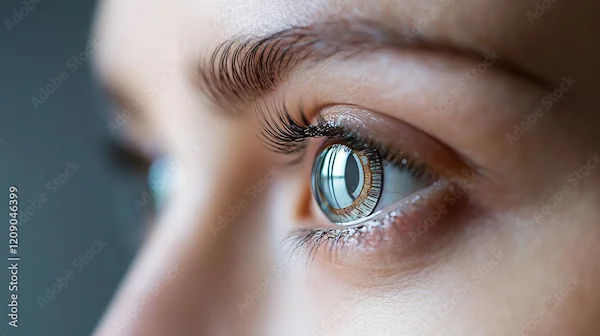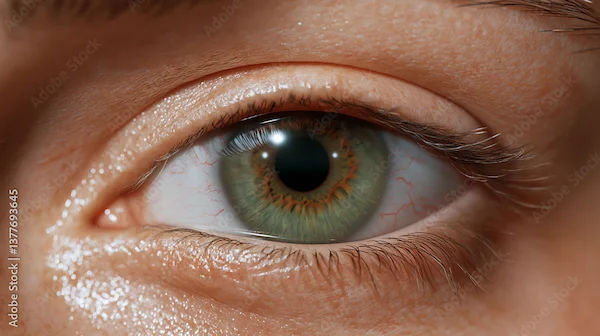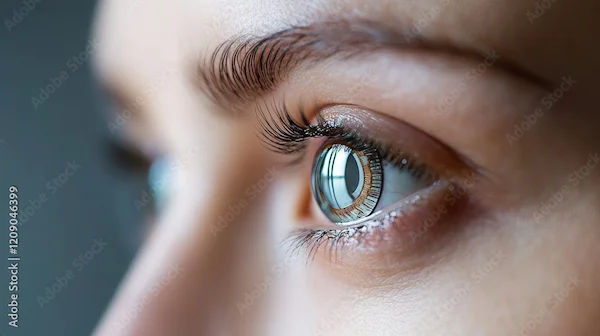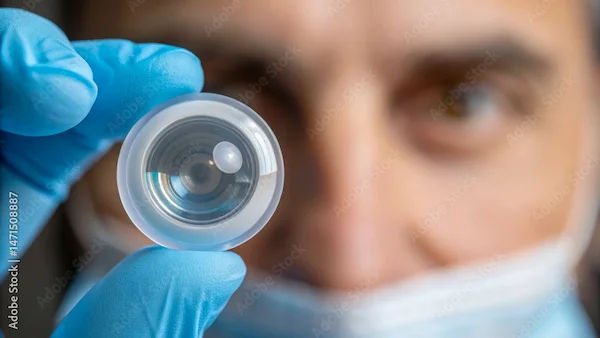Treating Anisometropia After Cataract Surgery
Discover effective treatments for anisometropia after cataract surgery. Learn about solutions to correct vision differences between eyes and improve your post-operative clarity.

Written by Dr.Sonia Bhatt
Last updated on 16th Jul, 2025

Introduction
Cataract surgery is a common and highly successful procedure that helps restore clear vision by replacing the cloudy natural lens with an artificial intraocular lens (IOL). However, some patients may experience a condition called anisometropia after surgery, which can cause discomfort and vision problems. If you or a loved one is dealing with this issue, don’t worry—there are ways to manage and correct it effectively.
What is Anisometropia?
Anisometropia is a condition where the two eyes have significantly different refractive powers, meaning one eye may be more nearsighted, farsighted, or have more astigmatism than the other. After cataract surgery, this can happen if the implanted lenses in both eyes do not match in power, leading to an imbalance in vision.
Symptoms of Anisometropia
If you have anisometropia after cataract surgery, you may experience:
Blurred or double vision
Eye strain or headaches
Difficulty focusing, especially when reading or using screens
Poor depth perception (trouble judging distances)
Dizziness or discomfort in daily activities
Why Does Anisometropia Occur After Cataract Surgery?
Several factors can contribute to anisometropia after cataract surgery:
Different Lens Powers – If the IOLs implanted in each eye have different focusing strengths, it can create an imbalance.
Pre-existing Refractive Errors – If one eye had a significantly different prescription before surgery, it might still have residual refractive differences afterward.
Surgical Factors – Sometimes, the calculations for lens power may not be perfectly accurate, leading to mismatched vision.
Healing Differences – Each eye may heal differently, affecting the final refractive outcome.
How Does Anisometropia Affect Daily Life?
Living with anisometropia can be frustrating. Simple tasks like reading, driving, or watching TV may become difficult. Some people may also experience:
Eye fatigue due to constant effort to focus
Motion sickness or dizziness because of poor depth perception
Reduced quality of life if left untreated
How is Anisometropia Treated?
The good news is that anisometropia can be managed effectively. Treatment options include:
1. Corrective Glasses or Contact Lenses
Glasses with different lens powers for each eye can help balance vision.
Contact lenses are another option, especially if the difference between the eyes is significant.
2. Refractive Surgery (LASIK/PRK)
If glasses or contacts aren’t comfortable, laser vision correction (like LASIK) can be used to adjust the cornea’s shape and reduce the refractive difference.
3. IOL Exchange or Piggyback Lenses
In some cases, the implanted lens may need to be replaced or supplemented with an additional lens to correct the imbalance.
4. Vision Therapy
Specialized eye exercises can help the brain adapt to the differences between the eyes, improving comfort and coordination.
Consult Top Ophthalmologist
Tips for Managing Anisometropia
While undergoing treatment, these lifestyle adjustments can help:
Use Proper Lighting – Reduce glare and strain by ensuring good lighting while reading or working.
Take Frequent Breaks – Follow the 20-20-20 rule: Every 20 minutes, look at something 20 feet away for 20 seconds.
Wear Sunglasses – Protect your eyes from excessive brightness, which can worsen discomfort.
Stay Hydrated – Dry eyes can aggravate symptoms, so drink plenty of water and use artificial tears if needed.
When to See a Doctor?
If you’ve had cataract surgery and notice persistent blurry vision, headaches, or difficulty adjusting to your new vision, consult an eye specialist. Early intervention can prevent long term discomfort and improve your quality of life.
Need Help? Book an Eye Check-Up Today!
If you're experiencing vision problems after cataract surgery, don’t ignore them. Schedule a consultation with an ophthalmologist at Apollo 24|7 to get the right diagnosis and treatment. Early correction can make a big difference in your comfort and vision clarity.
Take the first step towards better vision—book an appointment now!
Final Thoughts
Anisometropia after cataract surgery is treatable, and with the right approach, you can enjoy clear, comfortable vision again. Whether through glasses, contacts, or further surgical correction, modern eye care offers solutions to help you see better. Stay proactive, follow your doctor’s advice, and don’t hesitate to seek help if needed.
Consult Top Ophthalmologist
Consult Top Ophthalmologist
Dr. Padmini S
Ophthalmologist
4 Years • MBBS,MS
Bengaluru
Apollo Medical Center, Marathahalli, Bengaluru

Dr. Smriti Nagpal
Ophthalmologist
13 Years • MBBS , MS (Ophthalmology)
New Delhi
Sunshine mediclinic, New Delhi

Dr. Rajeev Gupta
Ophthalmologist
24 Years • MBBS, MS (Ophthalmology)
Ghaziabad
Om Eye & Gynae Centre, Ghaziabad

Dr. Vyankatesh Pharande
Ophthalmologist
25 Years • MBBS, MS (Ophthalmology )
Pune
PHARANDE EYE HOSPITAL & PHACO CENTER, Pune

Dr. Mridula V Amarnath
Ophthalmologist
12 Years • MBBS,MS (Opthalomology)
Bengaluru
Apollo Medical Center, Marathahalli, Bengaluru
Consult Top Ophthalmologist
Dr. Padmini S
Ophthalmologist
4 Years • MBBS,MS
Bengaluru
Apollo Medical Center, Marathahalli, Bengaluru

Dr. Smriti Nagpal
Ophthalmologist
13 Years • MBBS , MS (Ophthalmology)
New Delhi
Sunshine mediclinic, New Delhi

Dr. Rajeev Gupta
Ophthalmologist
24 Years • MBBS, MS (Ophthalmology)
Ghaziabad
Om Eye & Gynae Centre, Ghaziabad

Dr. Vyankatesh Pharande
Ophthalmologist
25 Years • MBBS, MS (Ophthalmology )
Pune
PHARANDE EYE HOSPITAL & PHACO CENTER, Pune

Dr. Mridula V Amarnath
Ophthalmologist
12 Years • MBBS,MS (Opthalomology)
Bengaluru
Apollo Medical Center, Marathahalli, Bengaluru




